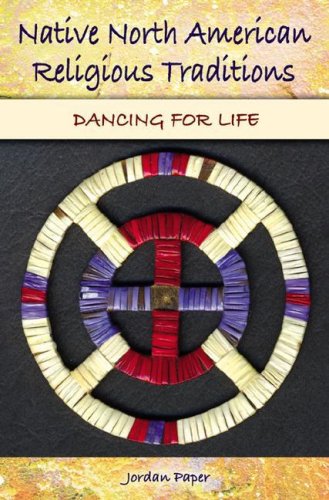

Most ebook files are in PDF format, so you can easily read them using various software such as Foxit Reader or directly on the Google Chrome browser.
Some ebook files are released by publishers in other formats such as .awz, .mobi, .epub, .fb2, etc. You may need to install specific software to read these formats on mobile/PC, such as Calibre.
Please read the tutorial at this link: https://ebookbell.com/faq
We offer FREE conversion to the popular formats you request; however, this may take some time. Therefore, right after payment, please email us, and we will try to provide the service as quickly as possible.
For some exceptional file formats or broken links (if any), please refrain from opening any disputes. Instead, email us first, and we will try to assist within a maximum of 6 hours.
EbookBell Team

4.8
104 reviewsRepresentative Native American religions and rituals are introduced to readers in a way that respects the individual traditions as more than local curiosities or exotic rituals, capturing the flavor of the living, modern traditions, even as commonalities between and among traditions are explored and explained. This general introduction offers wide-ranging coverage of the major factors—geography, history, religious behavior, and religious ideology (theology)—analyzing select traditions that can be dealt with, to varying degrees, on a contemporary basis.
As current interest surrounding Native American studies continues to grow, attention has often been given to the various religious beliefs, rituals, and customs of the diverse traditions across the country. But most treatments of the subject are cursory and encyclopedic and do not provide readers with the flavor of the living, modern traditions. Here, representative Native American religions and rituals are introduced to readers in a way that respects the individual traditions as more than local curiosities or exotic rituals, even as commonalities between and among traditions are explored and explained. This general introduction offers wide-ranging coverage of the major factors—geography, history, religious behavior, and religious ideology (theology)—analyzing select traditions that can be dealt with, to varying degrees, on a contemporary basis.
Covering such diverse ceremonies as the Muskogee (Creek) Busk, the Northwest Coast Potlatch, the Navajo and Apache menarche rituals, and the Anishnabe (Great Lakes area) Midewiwin seasonal gatherings, Paper takes a comparative approach, based on the study of human religion in general, and the special place of Native American religions within it. His book is informed by perspective gained through nearly fifty years of formal study and several decades of personal involvement, treating readers to a glimpse of the living religious traditions of Native American communities across the country.